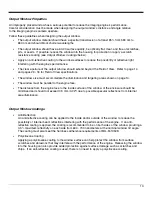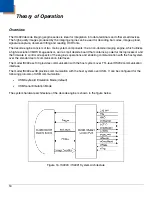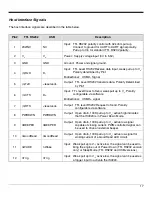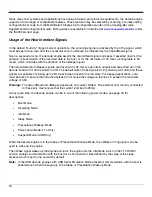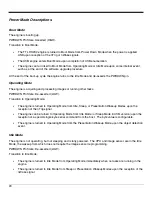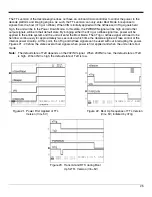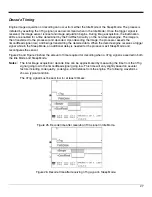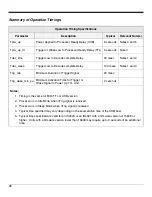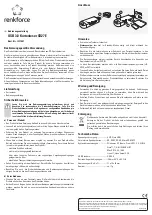
13
Output Window Properties
An improperly placed window has a serious potential to reduce the imaging engine’s performance.
Careful consideration must be made when designing the output window’s distance and angle relative
to the imaging engine’s camera aperture.
Follow these guidelines when designing the output window.
•
The output window material should have a spectral transmission of at least 85% from 580 nm to
680 nm and should block shorter wavelengths.
•
The output window should have a 60-40 surface quality, be optically flat, clear, and free of scratches,
pits, or seeds. If possible, recess the window into the housing for protection or apply a scratch
resistance coating (see
Output Window Coatings
below).
•
Apply an anti-reflective coating to the window surfaces to reduce the possibility of reflective light
interfering with the engine’s performance.
•
The clear aperture of the output window should extend beyond the Field of View. Refer to page 14
and pages 29 - 30 for Field of View specifications.
•
The window size must accommodate the illumination and targeting areas shown on page 14.
•
The window must be parallel to the engine face.
•
The distance from the engine face to the inside surface of the window of the enclosure should be
minimized and should not exceed 0.5 mm (0.02") due to possible specular reflections from internal
area illumination.
Output Window Coatings
•
Anti-Reflection
An anti-reflective coating can be applied to the inside and/or outside of the window to reduce the
possibility of internal beam reflections interfering with the performance of the engine. If an anti-
reflective coating is applied, the coating is recommended to be on both sides of the window providing a
0.5% maximum reflectivity on each side from 600 - 700 nanometers at the nominal window tilt angle.
The coating must also meet the hardness adherence requirements of MIL-M-13508.
•
Polysiloxane Coating
Applying a polysiloxane coating to the window surface can help protect the window from surface
scratches and abrasions that may interfere with the performance of the engine. Recessing the window
into the housing can also provide added protection against surface damage such as scratches and
chips. If an anti-reflective coating is used, there is no need to apply a polysiloxane coating.















